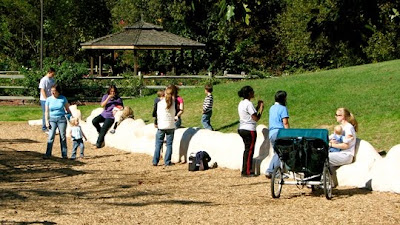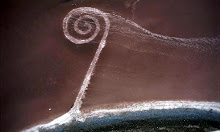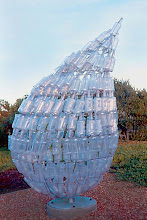
The idea of situationist art, the setting up of "predicaments" in society is most likely the point in which the idea of situation and site-specific art cross.
Situationist art deals with art that is put in one spot and to be moved would mean to ruin the work as a whole. People interact with it. Without the people, the art is also nothing. It is imperative that the work acts as a neutral stimulus and the people are externally acting upon it, I suppose sometimes, it upon them. Either way, a situation is produced and the works meaning varies according to each particular person and their own individual experience.
I find that words are sometimes the best way to talk about things but in this case I find that examples of art dealing with this nature may be more helpful
We can start by looking at the picture on the home page of the blog. The wall was set up specifically in that highly populated area in order so that it would affect many people.
I suppose it would be even more interesting to look at some ways in which people create their own situationist art without knowing. For example, in the field of psychology, a study on social influence was done by having actors go on a street corner and stare up at that building. The more people staring the more people would interact with the group. It puts them in a predicament, that is whether or not to stare.
One last example could be Wake Forest's own David Finn, who not long ago did a public art piece in Chapel Hill, NC. The work was a spine like, low level fence that surrounds a playground. It is interacted with daily and means something different to everyone.
As Giorgio Agamben says, there are two words for witness, the terstis and superstes. Either way, the witness in situationist art is imperative to the work.
There are many examples of situationist art, all of which rely heavily on the interaction between the piece and it's environment. Remember, it was put there for a reason.










No comments:
Post a Comment